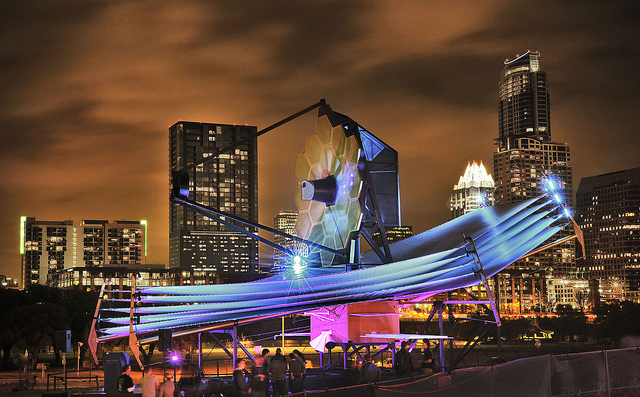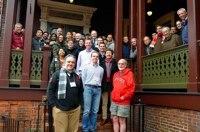19th International Conference on Microlensing
Welcome! Early this coming year, NASA, Goddard Space Flight Center will host the 19th Annual International Conference on Gravitational Microlensing. As the selected site for the Wide-Field InfraRed Survey Telescope project office, the community of scientists and engineers at GSFC are deeply invested in the community of microlensing researchers. This meeting will be a superb opportunity to permit interaction between international observers and theorists and members of the Nation's premier site for the design, integration and test of large, scientific space missions such as the Hubble Space Telescope and the James Webb Space Telescope. The venue for the conference will be Annapolis, the capital of the State of Maryland, the location of the United States Naval Academy, and a beautiful town connected deeply with the history of the USA. We look forward to your attendance at this exciting juncture for the science of gravitational microlensing.
The Wide-Field Infrared Survey Telescope (WFIRST) is a NASA observatory designed to perform wide-field imaging and slitless spectroscopic surveys of the near infrared (NIR) sky for the community. The current Astrophysics Focused Telescope Assets (AFTA) design of the mission makes use of an existing 2.4m telescope to enhance sensitivity and imaging performance. WFIRST-AFTA will settle essential questions in both exoplanet and dark energy research and will advance topics ranging from galaxy evolution to the study of objects within the Galaxy and within the Solar System. It is the top-ranked large space mission in the New Worlds, New Horizon (NWNH) Decadal Survey of Astronomy and Astrophysics. The main instrument is a wide-field multi-filter NIR imager and spectrometer. With the 2.4m telescope, a coronagraph instrument has been added to the payload for direct imaging of exoplanets and debris disks.

The James Webb Space Telescope (sometimes called JWST) will be a large infrared telescope with a 6.5-meter primary mirror. The project is working to a 2018 launch date.
The Webb will be the premier observatory of the next decade, serving thousands of astronomers worldwide. It will study every phase in the history of our Universe, ranging from the first luminous glows after the Big Bang, to the formation of solar systems capable of supporting life on planets like Earth, to the evolution of our own Solar System. JWST was formerly known as the "Next Generation Space Telescope" (NGST); it was renamed in Sept. 2002 after a former NASA administrator, James Webb. NASA Goddard Space Flight Center is managing the development effort and is integrating parts of the spacecraft and observatory at the present time.
Important Info
Date: January 19-22, 2015
Opening Reception: January 18, 2015
Excursion: January 22, 2015
Location: Annapolis, MD



